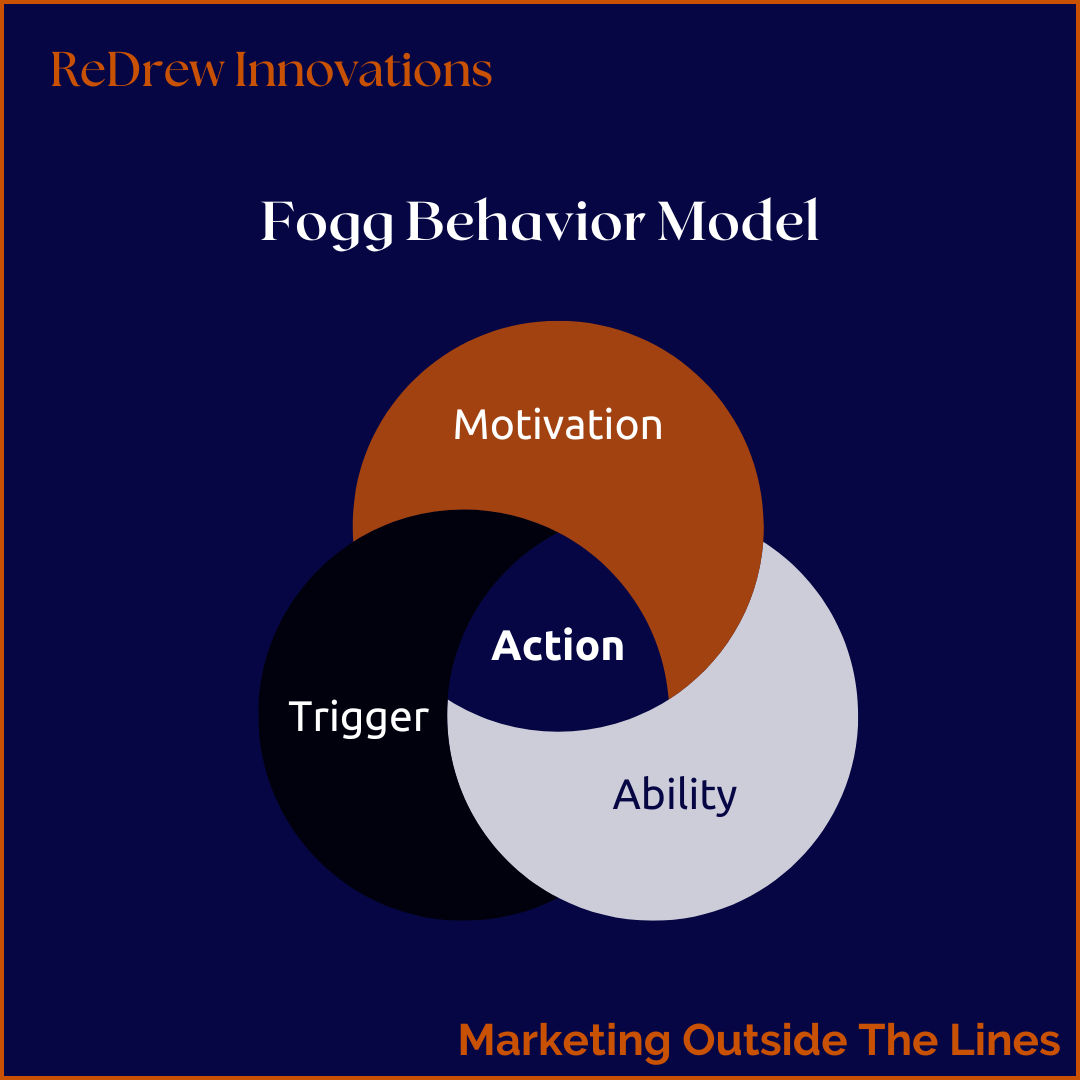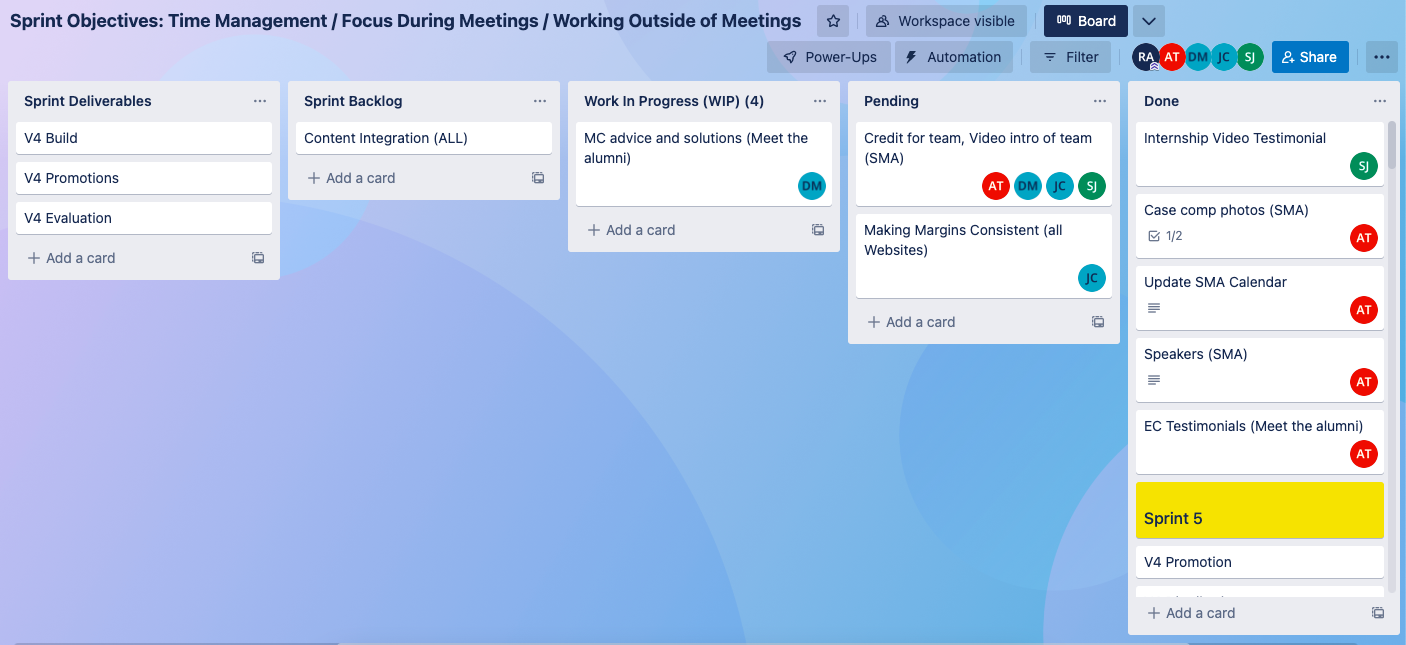Lessons Learned as a Product Manager

After 3 months as a Product Manager in Applied Marketing Communications, I am walking through what went well, what I could improve and actions to improve for the future.
Post created by Rebecca Drew
Applied IMC (Winter 2023)
Over the past 3 months, I have been a Product Manager in my Applied Integrated Marketing Communications (AIMC) class. For those of you who don’t know what the IMC is, it’s a class where students (Content Creator) learn how to create consistent marketing campaigns/messages across business communication channels. This is learned through building a Creative Strategy for a brand. In IMC, content creators create a Creative Strategy for the WWU Marketing Program and their brand. Having gone through IMC, in Applied IMC I got the opportunity to manage a team of four content creators. I lead them in creating four products and four marketing campaigns for the WWU Marketing Program. Today I am going to walk through a review and retrospective for those campaigns.
Review
At the end of a marketing campaign, the team goes through an evaluation process called a review. This is where they presented their end product to me and I gave them feedback on their campaigns. For my review, I will be sharing how I performed as a manager. Feel free to leave me comments on feedback you have for me!
As a manager, I think I did a great job at creating a wonderful team bond. We began to feel comfortable with each other which led to open communication among my team members. It also created an atmosphere where we worked with each other outside of team meetings. I am proud to say that our team has created new friendships.
That being said, it was still an adjustment being a Product Manager and there were some areas I needed to improve on. At the beginning of the quarter, I could have done a better job at walking my content creators through the kanban process. My team struggled to know what our cards in the kanban meant outside of our meeting time because they didn’t provide enough instructions on them. I think having done the content creator process already, I forgot how challenging it can be to get started using a new tool.
To improve this obstacle in the future I will be helping my team to break down our kanban into smaller bit-size tasks. Breaking down tasks into smaller tasks can easily become overwhelming for a team but it also creates the illusion of progress as it is easier to finish a task. Then having spent 1-hour completing work, it feels like an accomplishment to have completed so many items. It also helps to create a steady beat in your actions as completing one task does not require much energy and time.
Retrospective
At the end of a marketing campaign, the team also went through an evaluation process called a retrospective. This is where you review how the campaign process went as a team, what needed to be improved, and what actions can be done to improve.
From experience as a content creator I knew how challenging it can be to create products and marketing campaigns with a team that you don’t know. I also know how unbalanced a teams workload can be. As a Product Manager, I did everything I could do to make sure my team not only worked well with each other but could lean on each other. To create a bond where my team could be comfortable with each other, we spent our first meeting eating pizza and filling out a team contract where we all got on the same page regarding what we expected of each other. Luckily enough, we all agreed with each other on what we wanted to get out of the class. Having laid that foundation and put in the effort to get to know each other outside of team meetings, we were fortunate enough to create a great team dynamic and new friendships.
Motivation
However three weeks into our quarter my team began to lose motivation in completing our campaigns. This happens as students start getting swamped with deadlines for other classes. It became an increasing challenge for me to motivate my content creators to pull tasks from our kanban. Which is an organizational tool we used to manage our marketing campaigns. This lack of motivation led to my team procrastinating in completing our campaigns. Leading to a mad rush at the end of our sprints to complete our tasks.
Having known what I do now, I would have spent more time at the beginning to find the real motivation behind my team members and then create a system that triggers them to take action. I am not talking about wanting to get a good grade or to finish college, but instead what is their root cause of wanting to complete college? This Ted Talk by Simon Sinek does a great job of explaining the importance of knowing you’re why, and your purpose. One of my favorite quotes from Simon’s Ted Talk is this: “If you hire people just because they can do a job, they’ll work for your money, but if they believe what you believe, they’ll work for you with blood and sweat and tears.” Spending more time to figure out my content creators motives would have been a source in keeping them going when times get hard. Using a framework of “To, so that” is a great way to frame their purpose statements. For example, my purpose for taking AIMC is to learn to be an inspiring manager so that in the future I can create teams that innovate the world. Along with motivation, to create action you also need ability and a trigger. This is based on Fogg’s Behavior Model.

Ability
For action to take place, one needs to have the capability. To do this, a system of processes needs to be put in place to help those who aren’t sure what the next step is. This prevents friction in creating action because your team members know exactly what needs to be done next. Tools that can be used to create these processes can be as simple as a checklist or a kanban as I mentioned above. A kanban is a tool that is represented as a board with cards on it. During a lean meeting your team will map out everything that needs to be done to complete a goal and those tasks will be represented as cards on your board. I love kanbans in team projects because they allow for transparency and personal accountability within a team.

Trigger
The last thing needed to create action within a team is a trigger. If there is nothing to remind your team that work needs to be done it will fall out of mind. That’s where schedules, meetings, and routines come into play. Creating a steady movement of action with help to avoid the frantic pacing of trying to get everything done a few days before the deadline. Your kanban will help to keep that pace going. Try to pull your team to get at least one card done a day, helping to create a steady rhythm.
Having spent three months of my life as a Content Creator and three more as a Product Manager I am happy to say that I will be spending three more months in AIMC as the Managing Director for both IMC and AIMC. While I step into this new role I will be using everything I have learned from this six month journey to help me be the best Managing Director I can be to my teammates. To follow along on the next 3 month journey, subscribe to ReDrew Innovations to get free resources on how to manage a marketing team.
